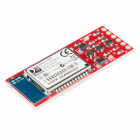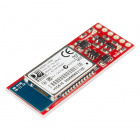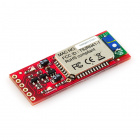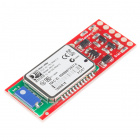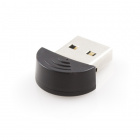Using the BlueSMiRF
Introduction
We do have the BlueSMIRF V2 with headers and the BlueSMiRF V2 PTH version available! Make sure to check out the latest tutorial using the BlueSMiRF v2s!
Are you ready to hit the airwaves and add Bluetooth to your project? With the BlueSMiRF and Bluetooth Mate line of products, you're much closer than you think to replacing those pesky, tangled RX and TX wires with 2.4GHz wireless communication.
SparkFun Bluetooth Mate Silver
WRL-12576SparkFun Bluetooth Mate Gold
WRL-12580Each of these modules has a Bluetooth transceiver on it, meaning they're capable of both sending and receiving data. They're perfect for directly replacing a wired asynchronous serial interface. Free of wires, your devices can be up to 100 meters away from each other. On top of those benefits, these modules are also very easy to use. There's no messing with Bluetooth protocols or the stack, just send data over a serial interface, and it's piped through to whatever Bluetooth module to which it's connected.
In this tutorial we'll cover everything you need to know about these Bluetooth modules. We'll begin with an overview of the hardware, and the differences between each device. Then we'll get into hardware hookup and example Arduino code.
Materials and Tools
For starters, you'll need one of the four Bluetooth modems we'll be covering in this tutorial: the Bluetooth Mate Silver, BlueSMiRF Silver, Bluetooth Mate Gold, or BlueSMiRF Gold. The modules all function in the same way, so this tutorial is applicable to all four.
SparkFun Bluetooth Mate Silver
WRL-12576SparkFun Bluetooth Mate Gold
WRL-12580Wireless communication won't do you any good unless you have two devices that can talk to each other! These Bluetooth modems can talk to any other Bluetooth device that supports SPP. That (long) list includes other BlueSMiRFs or Bluetooth Mates, or Bluetooth modules embedded into your computer, or even your smartphone. If your computer doesn't already have a Bluetooth module in it, you can plug a Bluetooth USB Module into an available USB slot.
Bluetooth USB Module Mini
WRL-09434We'll also need something to talk to the Bluetooth modem on the serial end. This will usually be a microcontroller of some sort. In this tutorial we'll be using an Arduino.
Finally, in order to interface to the Bluetooth modem, you'll need to solder headers or wires to it. You will need a soldering iron, solder, and general soldering accessories. This topic is covered further in the Hardware Hookup section.
Weller WLC100 Soldering Station
TOL-14228Suggested Reading
First and foremost, check out the Bluetooth technology tutorial if you want to learn some of the general concepts behind this nifty wireless standard.
Bluetooth Basics
It'd also be good if you're familiar with these concepts:
